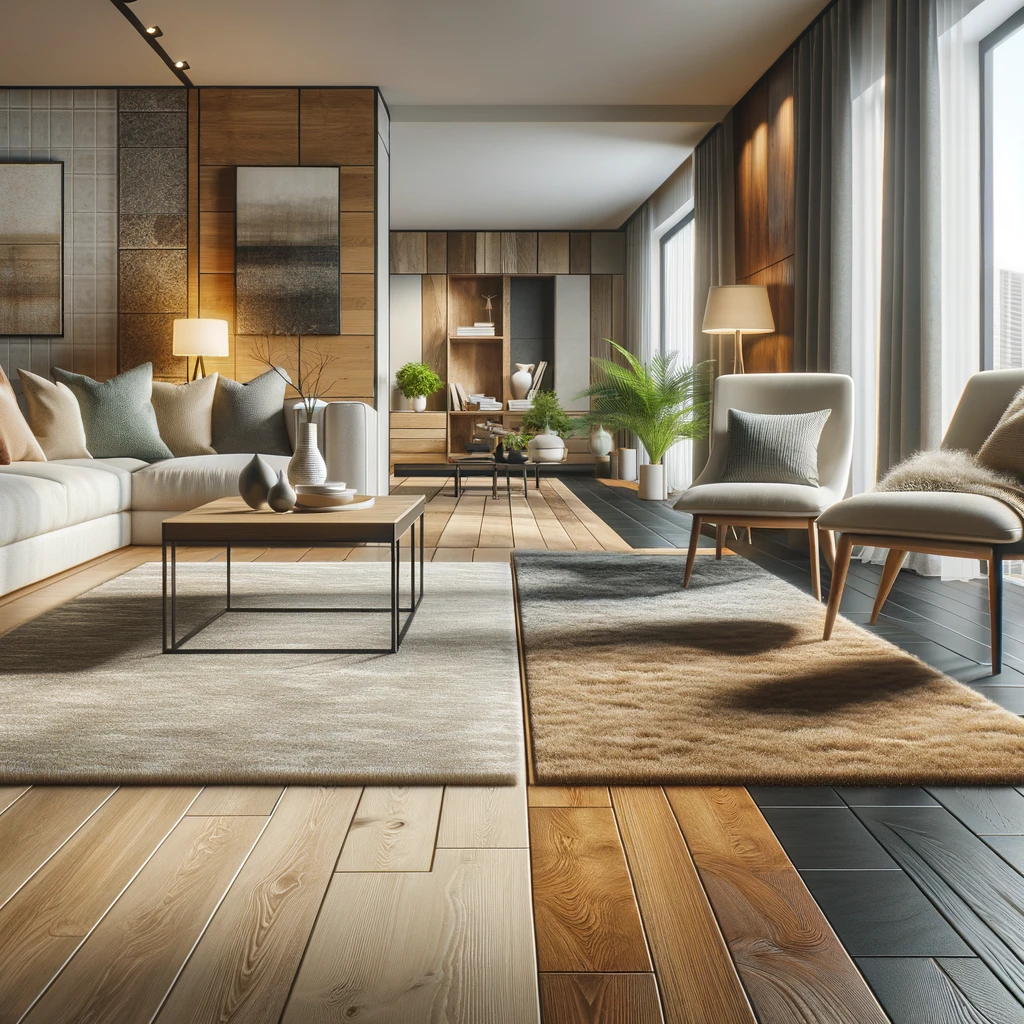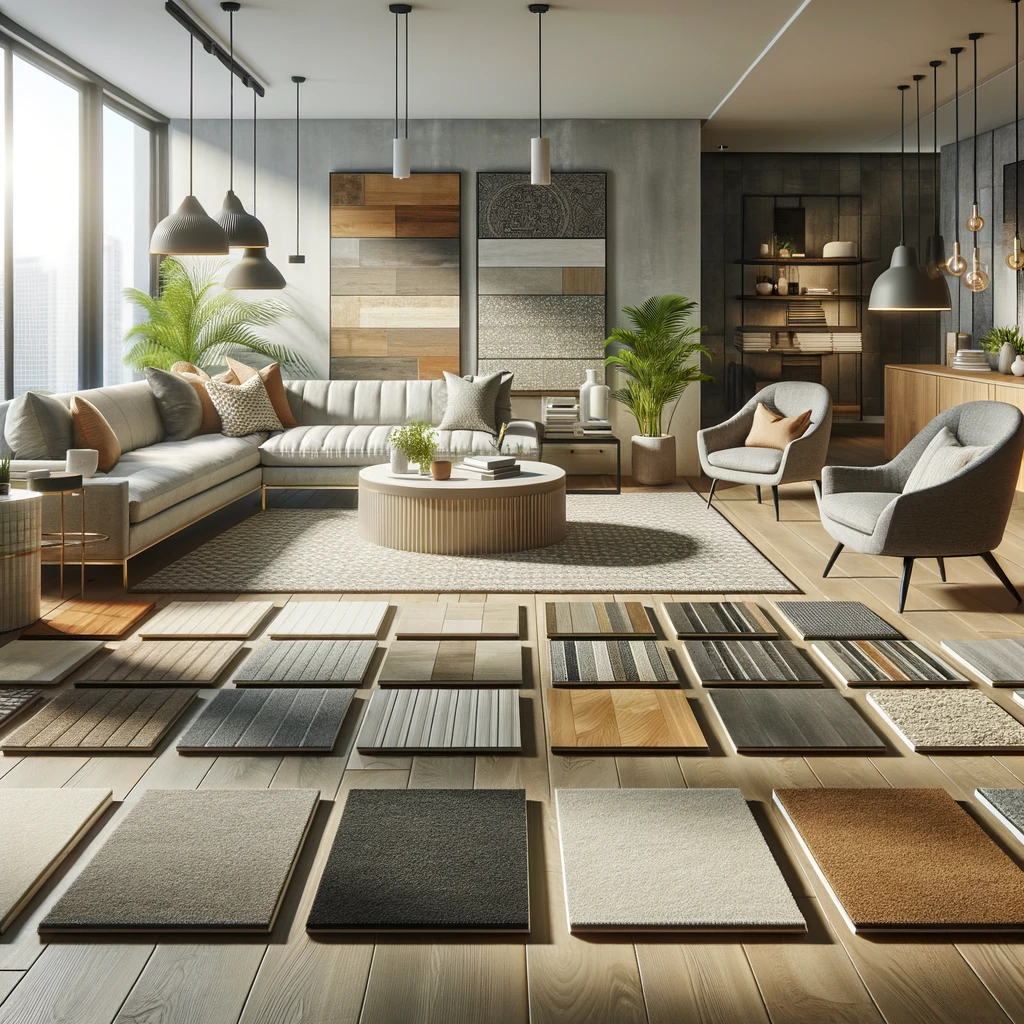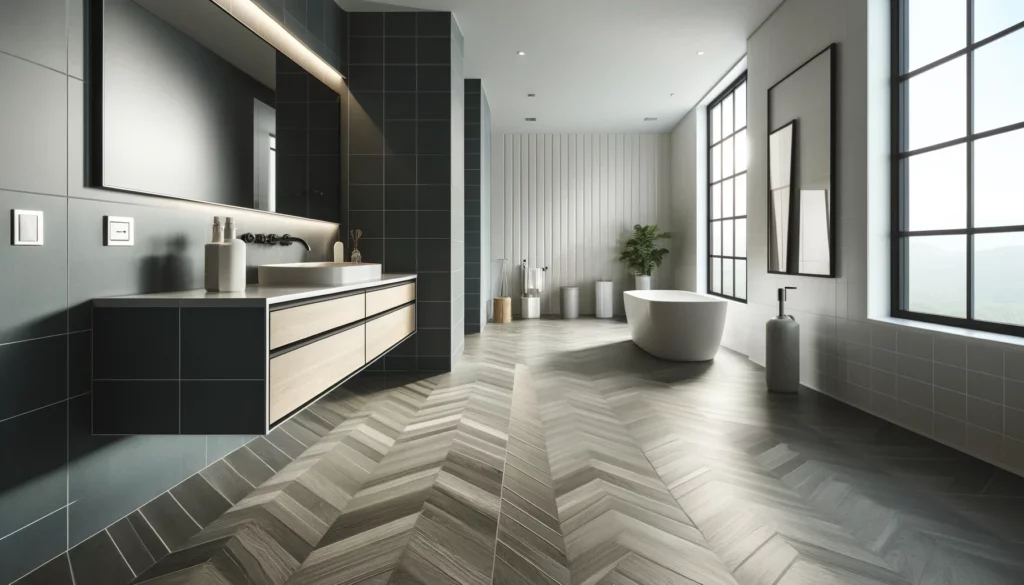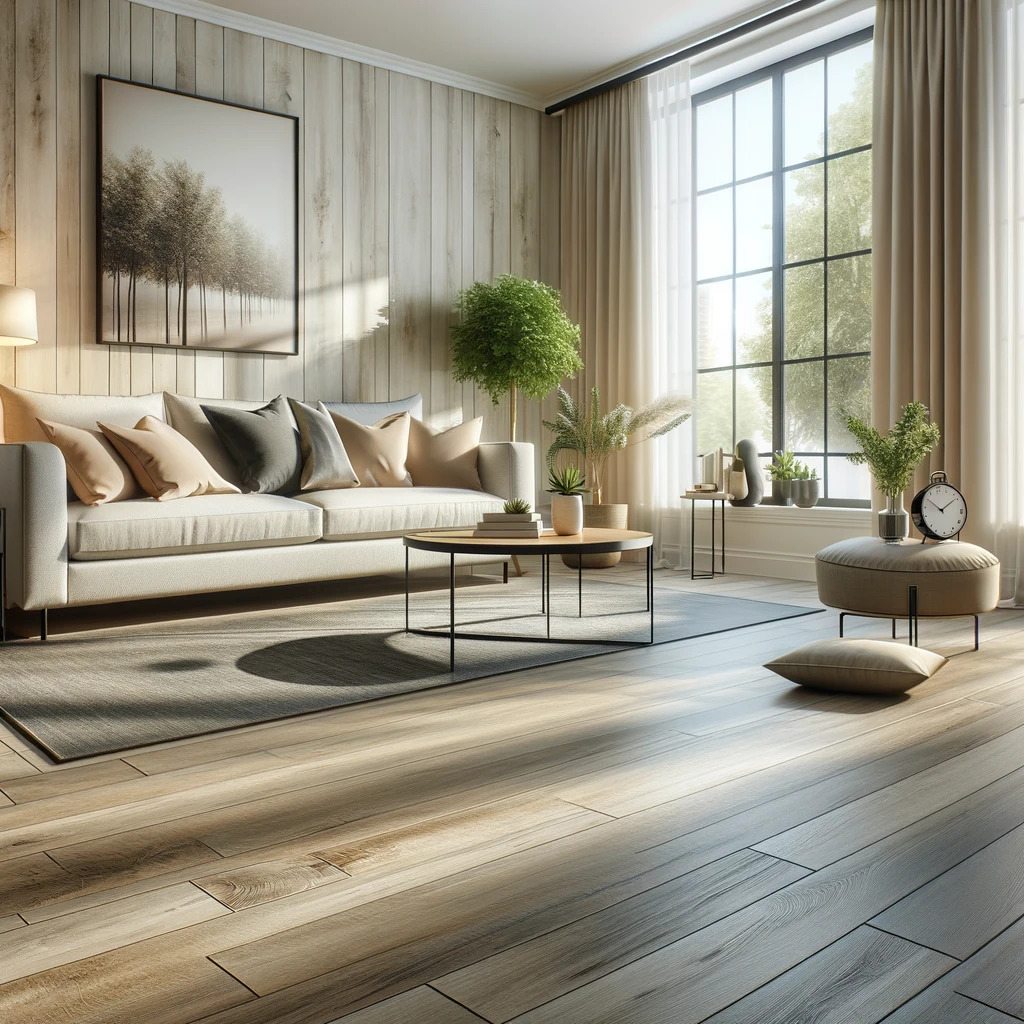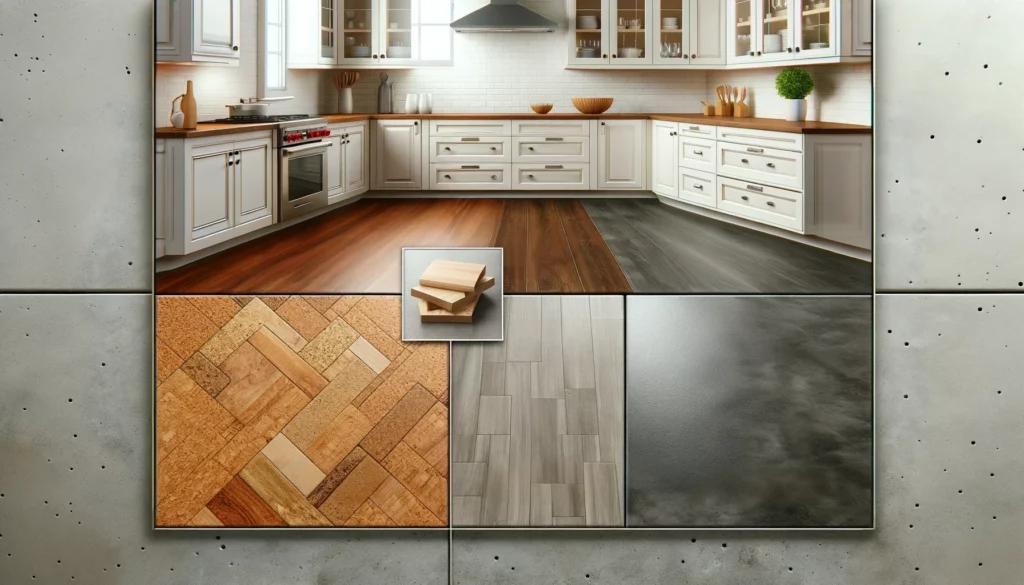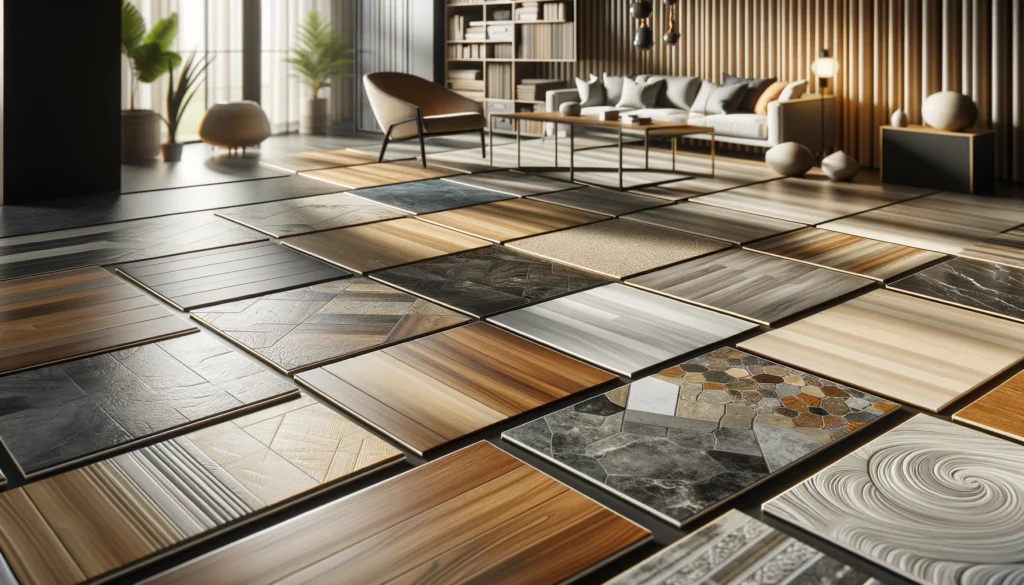The Battle of the Floors: Vinyl Flooring vs Laminate Flooring
When you are in the middle of a home improvement project, and you find yourself surrounded by flooring samples from wall to wall, there is no longer any avoiding it: laminate or vinyl? Homeowners are often bewildered between these two popular choices. Both types are affordable, durable and beautiful aesthetically mimicking materials such as wood, stone and tile. Even though they have some similarities, laminate flooring and vinyl floor are two disparate products with its own unique attributes that suit individual needs.
Homeowners often underestimate the clear cut differences between these two forms of flooring. It is a common misunderstanding that they are virtually the same and this may confuse confusion, ultimately causing them to make wrong decision for their place. Never fear, in the following guide, you will learn all there is to know about this showdown of flooring options.
These are some important factors to consider when deciding on the best flooring option for your home. Get started by considering the level of durability and water resistance you want – both are important factors in how well it will withstand daily life (including spills) as well as moisture. Secondly, think of the aesthetic that you hope to achieve and allow for predetermined choices in design on all flooring types. Finally, you will also want to weigh the cost of installation and maintenance if it is something that you could do yourself.
In this guide, we will break down all of these essential factors and reveal the pros and cons of laminate vs vinyl flooring. We will look at what makes them special, their materials and design. In the end, you will know the nuances of each flooring type that have it shine on its own and be able to choose what is best suited for your home.
For detailed information about the comparison between laminate, vinyl and other floorings , don’t miss our What is the Best Flooring for Your Home? A Comprehensive Guide to 5 Different Types of Flooring
Awareness of laminate flooring vs. vinyl flooring construction
But before we get into the nitty-gritty of laminate vs. vinyl flooring, let me help you with what these types of flooring are all about? Both Dupont and Pental Quartz are crafted to look as though they were natural material, yet the process of their creation and elements in the core are vastly different.
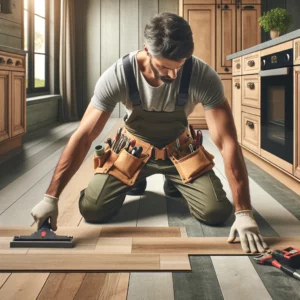
Crucial laminate Flooring Construction
Laminate flooring contains a number of layers that are compressed together during extreme heat and pressure. The reason it is so strong and stable due to this multi-layered architecture. The key components:
- Wear Layer: With materials such as aluminum oxide or melamine resin, this protective outer layer helps the floor resist scratches, stains, and wear. The thickness of this layer plays a big role in how much wear and tear the floor can take.
- Design Layer: The top layer in this layer is the design layer, which is a high-resolution photograph of real wood, stone or tile etc making it look exactly like that flooring. Advanced printing technology achieves extremely lifelike visuals that replicate true material characteristics down to the smallest details.
- Core Layer: The heart of the laminate flooring, providing structural stability and durability. It’s usually made out of either HDF (high-density fiberboard) or MDF (medium-density fiberboard), which are wood based composites.
- Backer Layer: This is a base layer that helps achieve moisture resistance and stability. Usually melamine or paper, it prevents moisture and subfloor variations.
Vinyl Flooring Construction:
While solid wood comprises the layers of this type of flooring, vinyl flooring has its multi-layered structure too using synthetic materials in place of composites. Moreover, its structure allows for it to be waterproof and easily adaptable as well. Top of a balance sheet forest creek here is quick overview.
- Wear Layer: Vinyl flooring — like laminate — features a wear layer that also protects against scratches, stains, and fading Its a layer of clear coat, usually an urethane-based coating, which means it is very resistant to scratching and lasting.
- Design Layer: This is a detailed digital image of wood, stone or tile that comprises the beauty element of the floor. In addition, the use of advanced printing techniques makes it possible to design some very realistic models and include textures or embossing in them.
- Core Layer: This is the layer that gives vinyl flooring its structure and shape. It is usually constructed of either stone plastic composite (SPC) or wood plastic composite (WPC), which are both environmentally friendly and eco-friendly man-made materials made up by combining PVC with other materials such as limestone, wood flour or calcium carbonate.
- Backing Layer: The back of the flooring is a base layer usually composed of stiff fiberglass. This increases the floor’s moisture resistance, and stability.
Although both laminate and vinyl flooring seems like provide realist design and are durable, their construction and core materials play a big role in how they will perform especially when it comes to water resistance or durability.
What should I be looking for in rain boots? Durability and Waterproofness
Weve talked about the basic make up of laminate and vinyl floors, now lets move on to the performance aspects. Durability and water resistance are two of the most important criteria that affect your choice in flooring from anywhere. In summary, understanding how each of these areas where you need to consider variety fits in will help you determine which type of flooring is most suitable for your unique requirements.
Durability & Water Resistance of Laminate Flooring
More or less, laminate flooring is somewhat impervious as far as scratches and dents under typical wear and tear circumstances. This is possible due to its layered structure, with a special focus on the wear layer. If that wasn’t enough, the water-resistance score is up for debate.
- Scratch Resistance: Laminate flooring have a tough, durable surface layer that will withstand scratches up to certain limits. The degree of scratch resistance differs with the thickness and quality of the wear layer.
- Dent Resistance: Laminate is moderately impact resistant but it can dent more easily than a vinyl surface. Flooring can be marked by heavy furniture or when an object is dropped on the floor.
- Stain-Resistant: thanks to the wear layer on laminate floors, this type of flooring is highly resistant against stains. But harsh chemicals or subjecting to things too long will cause damage.
- Water resistance: While natural timber floorboards are known for their ability to be easily damaged by water and moisture, its core being wood-based composites makes it prone to expansion and warping when exposed to in regular laminate flooring. That being said, new flooring technology has come a long way and brought us water-resistant and waterproof laminate options. Synthetics: These types incorporate a closed denier core and the wear layer which has properties w.r.to better preservation from spills / moisture.
- Fading: The wear layer on laminate flooring will protect the floor from fading due to sunlight.
Vinyl and Water Resistance/Vinyl Floor Durability:
With high water-resistance and decent durability, vinyl flooring is well known for being a common choice in moist or hazardous setting areas.
- Scratch resistance: vinyl flooring is usually a little less resistant to scratches than laminate due to the fact that its wear layer is a thinner. But, the wear layer on luxury vinyl planks has been created to hold up against daily routine use.
- Dent Resistance: Vinyl floors are typically more resistant to dents in comparison with laminate flooring. The ability to flex, enables and absorbs some minor impact — better for heavy objects or furniture.
- Stain Resistance: Vinyl flooring does not easily become dirty, because frontiers of this type are clearly non-dirty. While it is virtually free from discoloration caused by sitting in harsh chemicals or dyes over long periods of time.
- Water Resistance: This contest of water resistance goes to vinyl flooring. This makes it fully waterproof, its core built from synthetic materials. For this reason, it is a great choice for bathrooms, kitchens, mudrooms and other areas subject to moisture.
- Fading: The UV-resistant wear layer of vinyl flooring also protects it from the element or normal issues like sun damages.
Note that the durability and water resistance of laminate and vinyl floors can depend on such factors as brand, quality, particular product attributes etc.
Aesthetics and Styles Go Hand in Hand Publishey Blocks Unlock Aesthetic Appeal
Durability and water resistance are vital, but so is the appearance of your new floor. Laminate and vinyl flooring both come in a beautiful array of natural-looking designs, enabling them to complement just about any interior style or colour scheme.
The Design: aesthetics and types of laminate flooring.
Due to advances in printing and embossing technologies, laminate flooring has bolstered its position as a cost-effective alternative to hardwood, ceramic stone or limestone tile. From improvements in printing technology and design to a wider variety of options.
- Sensible Wooden Designs: Laminate ground is the best job of simulating wood choices, from standard oak and maple to more distinctive alternate options like bamboo. These designs frequently feature hyper realistic wood grains, knots, and textures to bring a truly genuine look.
- Stone & Tile Styles: laminate flooring provides the look of real natural stone such as slate, granite or travertine. Any of these designs will give a space an aura of elegance and sophistication.
- Availability in Various Colors: It is possible to find laminate floors in a wide range of colors, including warm browns, rich reds, cool grays and neutral whites. In fact, regardless of which decor style you prefer (rustic, modern or classic), I am sure you can find some options that would match it!
- Next to the surface of the floor you will also The look of real wood floors many laminate floors come equipped with textures and embossing as a way to give the laminates we same feel that is present in traditional hardwood. This provides a tactile layer to make you feel like it is the real material that this flooring is trying to copy.
Vinyl Flooring Style and Designs:
Vinyl flooring products have gone through rapid advances in technology allowing for greater visual realism.
- Authentic Wood Designs: Some vinyl flooring is crafted with impressive wood-look designs that closely mimic the detail and authenticity found in true hardwoods, giving natural appearance down to the distressed saw marks. By far, the best at simulating real hardwood is luxury vinyl planks.
- And say hello to Stone and Tile Designs: Vinyl flooring ideas in stone and tile looks are durable, beautiful ways to capture the sleek sophistication of one you love. This encompasses looks such as marble, ceramic, slate as well porcelain tiles.
- Vinyl flooring is widely available in an array of colors that will help it blend well with any decorative style. There are even colors that can fit the bill for everything from a pop of bright boldness to something much more muted.
- Texture and Emboss: Vinyl flooring has excelled in the recreation of these textures and Natural shades. Luxury vinyl planks often resemble authentic wood, including its knotty and fine graining, while vinyl tiles come in a variety that can replicate stone or tile textures down to the molecular level.
Laminate and the vinyl flooring options are extremely appealing to a generation of home owners who have more choices in color, texture and price than previous generations. This basically comes down to your own personal preference and how you want everything to look in the room.
A DIY Approach to Installation & Upkeep
Having known more about laminate and vinyl, including its durability, water-resistant properties, and appearance let us now look at the other aspect — installation & maintenance. Homeowners are the ones who opt to complete these tasks on their own or, at a minimum, those that need to know what they’re in for when hiring out.
Laminate Flooring Installation and Care:
Click-lock installation makes laminate ready for a DIY installation. This is the DIY System and it have a pretty easy installs, this systems are known to be very popular with homeowners that wan’t to install roof solar them self.
- Click-Lock System: Most laminate flooring planks are tongue and grooved, and you will not need to use any adhesive or nails in fix them together. This system creates a floating floor, which can be installed easily over level subfloor.
- Underlayment: Lamanite flooring usually needs an underlayment to function as padding, noise insulator and moisture barrier. Underlayment Most types of click-together planks require an underlayment to even out the surface and simply Ivar field foam, cork, or rubber it can add comfort and insulationPoints for Return Maximum points go to vinyl plank flooring inaccuracy both durabilityUb.lineEdit
- Tools Needed: For installing laminate you will need the basic hand tools like a saw, tape measure, hammer and a tapping block. However, some more special tools — such as a flooring saw or even a knee kicker — can ease the installation process.
- Low Maintenance: Laminate flooring is a breeze to maintain. This is, generally the case that all you should be able to keep it clean a regular sweeping, vacuuming and damp mopping are what is required. Do not use harsh chemicals or abrasive cleaners that can damage the wear layer. Although most laminate flooring is water-resistant, be sure to quickly wipe up spills to avoid the material may be damaged by prolonged moisture exposure.
Vinyl Flooring Install And Maintenance
More labor intensive than laminate, vinyl flooring installation requires glue-down applications. Newer click-lock version of vinyl plank are giving these types a run for their money, and they are much easier to install.
- Glue-Down Method: Traditional vinyl flooring is always glued down to the subfloor, so it must be flat and free of substantial cracks. For the more skilled DIY types this technique can a little difficult as it requires precision and following manufacture guidelines.
- Click-Lock Vinyl Planks: Newer to the scene, these vinyl planks create a more simple installation process by having an adhesive-free click-lock system like that found in laminate. They could be a good choice for DIYers who are more interested in ease of installation.
- Tools Requried: You will be needing the following tools to install vinyl flooring and can also differ with respect to method. Vinyl planks that are glued down will use a trowel (beveled and notched), putty knife, and flooring saw if necessary. In both cases, installing click-lock vinyl planks is a simple process that involves peeling off the back of each plank and then clicking all four sides to one another.
- Maintenance:As is the case with laminate, vinyl flooring is mostly low maintenance. For regular maintenance, sweeping, vacuuming and damp mopping is enough to keep the floors looking new. Do not use harsh chemicals or abrasive cleaners which might destroy the wear layer. Due to its waterproof quality, viewers might imply that vinyl flooring is a more sensible option for spaces where spillage occurs frequently.
Whether you opt for laminate or vinyl flooring in your home will come down to how comfortable you are with DIY projects, whether the property is a house or an apartment, and moreover which one suits how YOU prefer to install.
Compare in budgetary Cost and Value
Lastly, but very importantly is the price when looking for flooring and this can make a big difference to most home owners so fiture this out before anything else. Laminate and vinyl flooring are both cheaper than natural hardwood or stone, but differences in their price points and resale value exist.
Cost and Value of Laminate Flooring:
This laminate flooring is also generally decently priced as well, often falling in a lower price range compared to that of vinyl flooring. Its low cost makes it an appealing choice to budget-minded homeowners.
- Material Cost: Laminate flooring costs anywhere from $1.50 to $5 per square foot, depending on the quality, brand, and design. The more complex designs, wear ratings and thicker planks are becoming the reason for a price increase.
- The Cost of Installation: Costs To Install Laminate Flooring can be quite high or low depending on the size, shape and difficulty of the installation. Labor costs from a professional amount to $2-$4 per square foot, and DIY installation can bring down the cost of the project.
- Underlayment Cost: Using underlayment increases all top layers cost. While these prices differ with the material, the thickness of what is being used are typically priced at a cost between $0.50 to $2 per square foot.
- Lifespan: Laminate floors can last for up to 10,15, or even 25 years with the right care and maintenance. It is also less durable than vinyl and may require that it be replaced before high traffic areas or in moisture prone locations.
- Resale Value: If it’s well-maintained and the style is relatively current, laminate flooring can add value to your home. Yet it might not be as important of a feature as, say, hardwood or luxury vinyl plank flooring.
The Value And Price Of Vinyl Flooring
Vinyl flooring can range in price but typically more expensive than laminate being comparable to some higher end laminates. That being said, vinyl can be a highly affordable option to provide a new look audience for your news outlet.
- Cost of Materials: Prices for vinyl flooring are anywhere from $2 to $8 a square foot, depending on type and quality (and design, too). The cost of luxury vinyl plank is generally on the higher side, while other flooring materials like sheet vinyl or basic vinyl planks are less expensive.
- Installation Cost: While vinyl flooring is waterproof, it may crack if exposed to sharp utensils or heavy point loads. Possible to install as DIY but can be less user-friendly. In general, you can expect professional installation to cost anywhere from $3 to $5 per square foot.
- Durability: If vinyl flooring is installed and well taken care of, it will last between 20 to 30 years. High traffic and liquid exposure resistant, it is a durable alternative in comparison to other materials that are prone to being stained or damaged.
- Resale Value: Really good quality vinyl flooring, such as luxury vinyl planks or tiles can improve the value of your home greatly. Potential buyers may be attracted to its longevity and water resistance which could drive up the resale value!
Ultimately, the choice between laminate and vinyl flooring comes down to a trade-off of cost and long-term value. This may cost a little more than laminate in the beginning, but if you are selling your house someday or live in an area like Georgia where we aim for 85% humidity and torrential downpours most of our lives, this could very well be worth doing.
Laminate vs. Vinyl Flooring: Frequently Asked Questions
Which flooring is more durable, laminate or vinyl?
Laminate is generally known for its scratch resistance, making it more durable against everyday wear and tear. However, vinyl is more dent-resistant and can withstand heavier impacts. It comes down to what kind of wear and tear you anticipate: laminate for scratches, vinyl for heavy impacts.
Which flooring is better for kitchens and bathrooms?
Vinyl flooring is the clear winner for kitchens and bathrooms. Its completely waterproof nature makes it ideal for areas prone to spills and moisture. While some laminate flooring is water-resistant, it is not as impervious to moisture as vinyl.
Is laminate or vinyl flooring easier to install?
Laminate flooring is generally easier to install due to its click-lock system, making it a popular DIY option. Vinyl flooring, particularly glued-down planks, can be more challenging to install. However, newer click-lock vinyl plank options are becoming increasingly popular and offer a simpler DIY installation process.

